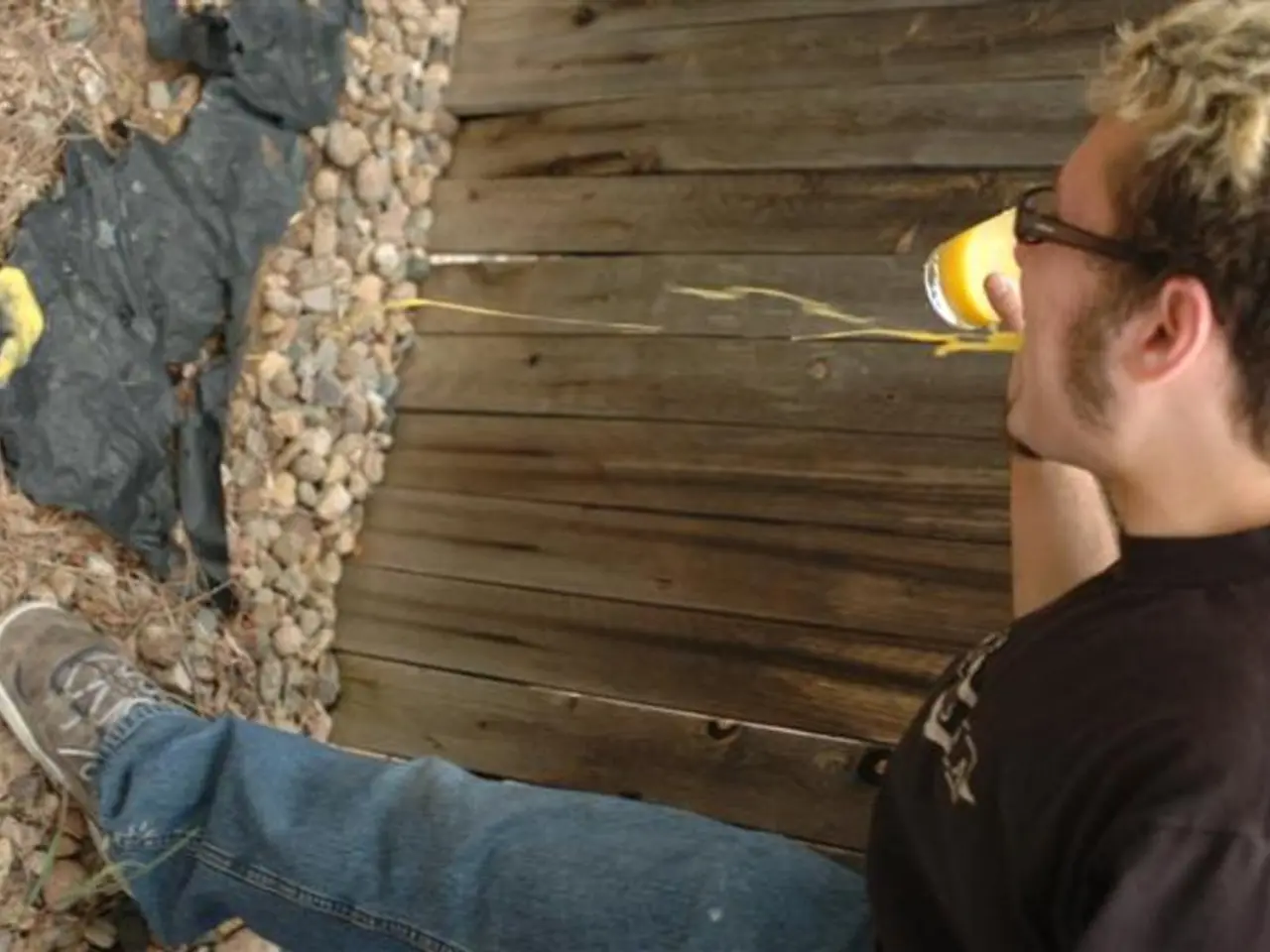Scabies: Images, causes, treatment options, and further details
Scabies, a common skin condition caused by the Sarcoptes scabiei var. hominis mite, also known as the human itch mite, affects people worldwide regardless of race, age, or socioeconomic status. This tiny mite burrows under the skin, causing a range of symptoms including intense itching, rashes, and skin burrows.
After burrowing, the female mite lays its eggs in the tunnel it has created, and once hatched, the larvae move to the skin's surface, spreading across the body or to another host through close physical contact. Scabies mites can live for 1-2 months on children and adults, but only survive for up to 72 hours when not on a host.
Symptoms of scabies are often worse at night and can occur on any part of the body, not just where the rash appears. Common symptoms include intense itching, tiny red bumps similar to small insect bites, thin, wiggly lines on the skin with tiny blisters or bumps, often in skin folds, red or brown nodules, and in severe cases, heavy crusting.
Scabies most often occurs in children and young adults, with outbreaks common in childcare facilities and schools. To prevent infestations and spreading, a person should wash or dry-clean all clothes, towels, and linens using hot, soapy water and dry on high heat, and vacuum the entire home on the day treatment is initiated, either discarding the bag or thoroughly cleaning the vacuum's canister.
Doctors treat scabies with topical medications such as 5% permethrin cream, crotamiton cream, or lindane lotion. In some cases, a 25% benzyl benzoate lotion or 10% sulfur ointment may be necessary. In addition, a doctor might prescribe other medications, including antihistamines, anti-itching lotions, antibiotics, and steroid creams, to relieve symptoms.
In some instances, home remedies such as tea tree oil, oatmeal baths, moisturizer, loose-fitting clothing, and avoidance of scratching or rubbing the skin may be used. However, it's essential to consult a doctor first, as many home remedies are not scientifically proven to treat scabies effectively.
Ivermectin, an oral medication, may be an option for people with weakened immune systems, those with crusted scabies, or those who do not respond to topical therapy. However, it is not suitable for use during pregnancy, while breastfeeding, or in small children.
Scratching or rubbing the skin during a scabies infestation can create skin sores, which, if infected with bacteria, could lead to serious conditions such as heart disease, kidney disease, or blood poisoning.
It's important to note that not all individuals with scabies will experience itching, which means they can still spread the infection even without symptoms. Scabies is highly contagious and spreads through close physical contact and sharing of infested items like bedding, clothing, and furniture.
In conclusion, understanding scabies is crucial to prevent its spread and ensure timely and effective treatment. By adhering to preventive measures, seeking medical advice, and following treatment guidelines, individuals can manage this condition and prevent its potential complications.
- The female scabies mite lays its eggs in a tunnel it has created, and the larvae move to the skin's surface, potentially spreading across the body or to another host through close physical contact.
- Once hatched, the larvae may spread, causing scabies to be highly contagious and easily transferred between individuals.
- Scabies affects people regardless of race, age, or socioeconomic status, and can appear on any part of the body, not just where the rash appears.
- Symptoms of scabies include intense itching, thin, wiggly lines on the skin with tiny blisters or bumps, and red or brown nodules, among others.
- Scabies can lead to serious conditions if the skin sores become infected with bacteria, such as heart disease, kidney disease, or blood poisoning.
- To prevent infestations and spreading, it is essential to wash or dry-clean all clothes, towels, and linens using hot, soapy water and dry on high heat, and vacuum the entire home on the day treatment is initiated.
- In addition to topical medications, other medications like antihistamines, anti-itching lotions, antibiotics, and steroid creams may be prescribed by a doctor to relieve symptoms associated with scabies. Furthermore, home remedies are not always effective and should only be used after consulting a doctor.




